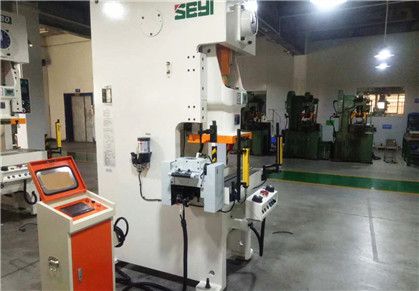Servo Feed With Mechanical Relax For Coil Feeding Processing

A mechanical servo feeder is a type of feeder machine that is used to feed raw materials, such as metal coils, into a stamping press for processing. Unlike a conventional feeder machine, which uses mechanical components to adjust the feed rate and accuracy, a mechanical servo feeder uses a servo motor to control the feeding process.
Mechanical servo feeders are ideal for applications that require high levels of precision and accuracy, such as the production of automotive parts or electronic components. They are capable of handling a wide range of materials, including aluminum, steel, and other high-strength metallic materials, and can handle a variety of thicknesses and widths.
Why Servo Feed With Mechanical Relax Is Popular in Market?
When considering the purchase of a feeder machine for a metal stamping line, one of the key decisions to make is whether to choose a mechanical servo feed or a pneumatic servo feed. While both options can provide accurate and consistent feeding of raw materials into the stamping press, there are some key differences between the two.
Recently, a metal fabrication company in the electronics industry was facing this decision as they looked to upgrade their equipment. They considered the pros and cons of both mechanical servo feeds and pneumatic servo feeds, eventually deciding to go with a mechanical servo feeder.
Their decision was based on several factors. Firstly, they needed a feeder that could provide high levels of precision and accuracy in the feeding process, as their production requirements were increasingly demanding. They found that mechanical servo feeders offered the most precise control over the feeding process, with a servo motor controlling the feed rate, speed, direction, and length of the feed.
Additionally, energy efficiency was an important consideration for the company. They found that mechanical servo feeders were more energy-efficient than pneumatic servo feeders, as they only use energy when they need to adjust the feeding process, while pneumatic servo feeders require a constant supply of compressed air.
Finally, the company found that mechanical servo feeders offered better customization options and were easier to integrate into their existing system. They could adjust the feeding process to meet their specific production needs and easily integrate the feeder into their existing production line.
Overall, the company found that a mechanical servo feeder was the best choice for their needs, providing precise and accurate feeding of materials while also being energy-efficient and customizable. While pneumatic servo feeders may be suitable for some applications, the metal fabrication company found that a mechanical servo feeder was the best option for them.


